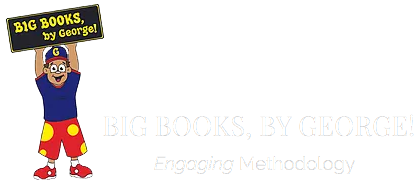The Age Categories of Children’s Books – And Why They Matter
Do you know the different age categories for children’s books? There are big books for preschoolers, early readers, middle-grade readers, and young adults. Each category caters to a specific age group with content that is appropriate for their stage of development. Why do these categories matter? Because it is important that children read books that are tailored to their individual reading level. If they are reading too difficult or too easy material, they will not get the most out of their reading experience. For more insights, you can visit: BBBG.
If you are an author writing a children’s book, you should get familiar with the age categories and make sure your book falls into an appropriate category. You want to ensure the content is appropriate for your target audience and that they will be able to understand it. This is why age categories are so important in children’s books.
In this blog post, we will explore the different age categories for children’s books and discuss why they are important!
0-3 years
At this age, children are new to the world of books. They’re just beginning to learn a language and understand basic concepts. Books for this age group should be simple, with colorful illustrations and limited text. This helps draw their attention and keep them engaged while they’re learning the building blocks of reading. There should be a max of 300 words in the book.
Picture books
At this stage, children are learning to recognize words without necessarily being able to read them. Picture books use a combination of illustrations and simple text that can help young readers make the connection between words and their meanings. The age group of this category is 4-8 years and books should contain about 600-1000 words.
Early Readers
Early Reader books are for kids who are just beginning to read on their own. The text is usually slightly more complex than preschoolers’ books, with more sentences and words. These books often contain simple plots and characters that young readers can relate to. The word count is usually a max of 2000 words.
Chapter books
Chapter books are for children ages 6-10. They contain more complex plotlines and characters, with a higher word count (up to 20,000 words). These books can help readers develop critical thinking skills and understand the nuances of plot structure and characterization.
Middle Grade
Middle-Grade books are aimed at children between 8-12 years old. They usually have an entertaining plot line, engaging characters, and longer stories. The text is usually about 8,000-20,000 words. The content should be age appropriate and the main character should be someone that young readers can identify with.
Young Adult
Young adult books are for teenagers between 12+ years old. They usually tackle more mature topics and may contain darker elements in their stories. The word count is usually 25,000-80,000 words.
Hopefully, this post has helped you understand the different age categories for children’s books and why they are important. Remember, it is essential to read appropriate materials that will help your child develop their reading skills in a positive way.
It is also important for authors to write in an age category because they need to ensure that the content they are creating is appropriate and will be understood by their target audience. Age categories help provide guidance to authors on what type of topics and language should be used in order to create a successful book. Additionally, it helps them determine the length, complexity, and depth of their stories so that they can be tailored to the age group. So make sure to check out books that fall into the right category!
